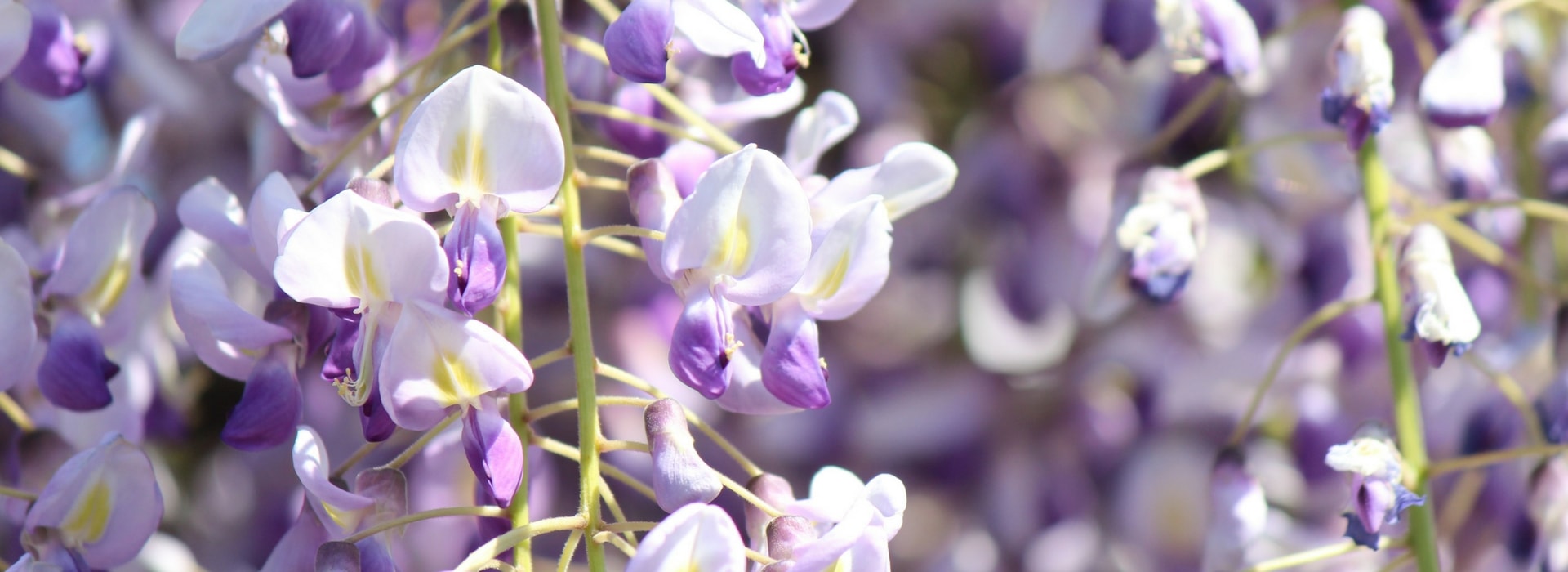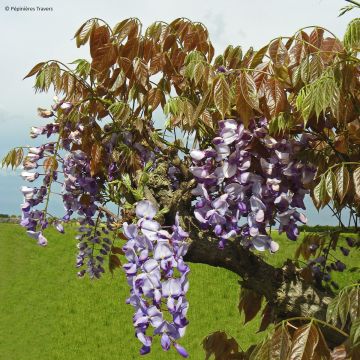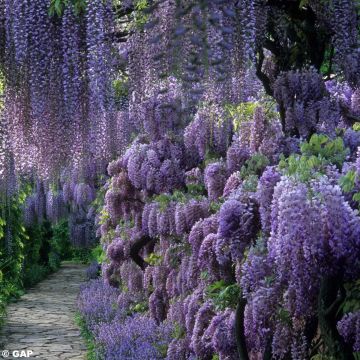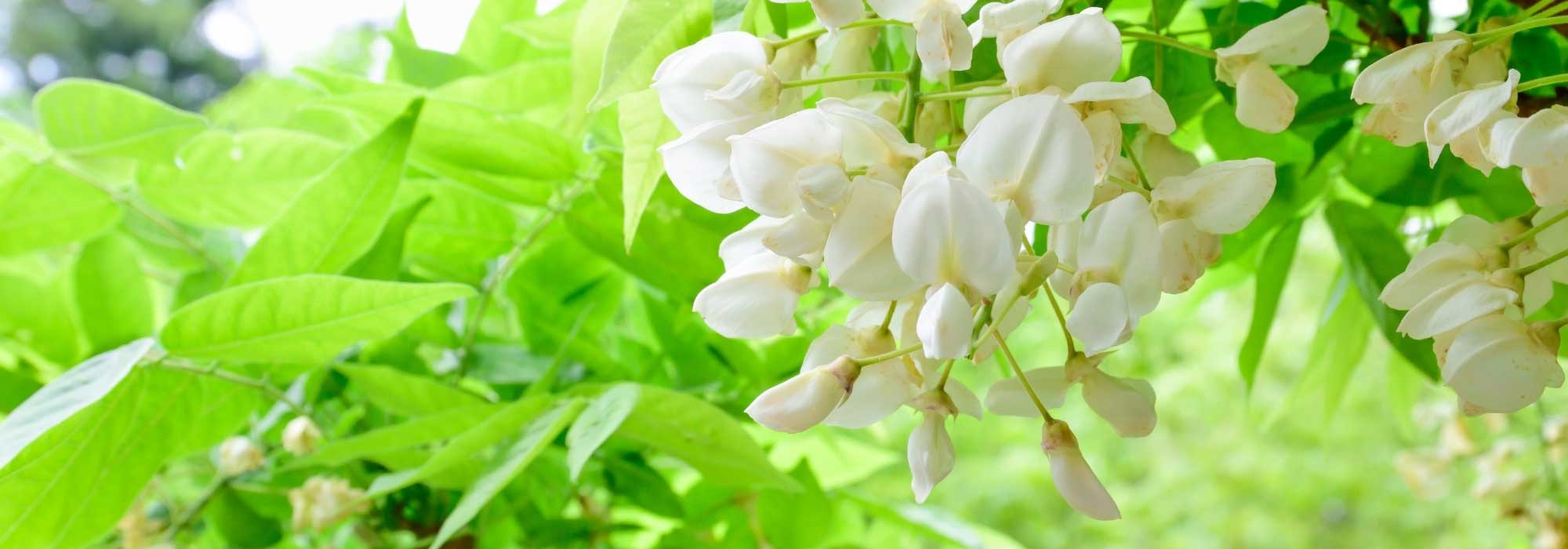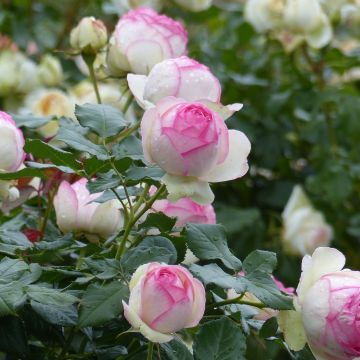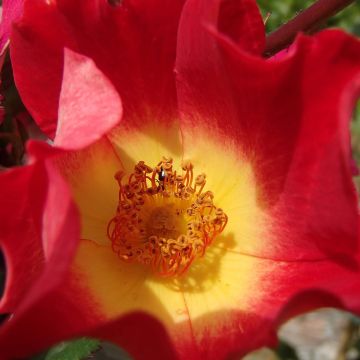

Wisteria brachybotrys Yokohama Fuji


Wisteria brachybotrys Yokohama Fuji
Wisteria brachybotrys Yokohama Fuji
Wisteria brachybotrys Yokohama Fuji
Silky wisteria 'Yokohama Fuji'
Not vigorous enough for recovery, I had two or three aborted flower starts and the wisteria didn't have enough energy to restart afterwards.
Jonathan , 04/06/2024
Special offer!
Receive a €20 voucher for any order over €90 (excluding delivery costs, credit notes, and plastic-free options)!
1- Add your favorite plants to your cart.
2- Once you have reached €90, confirm your order (you can even choose the delivery date!).
3- As soon as your order is shipped, you will receive an email containing your voucher code, valid for 3 months (90 days).
Your voucher is unique and can only be used once, for any order with a minimum value of €20, excluding delivery costs.
Can be combined with other current offers, non-divisible and non-refundable.
Home or relay delivery (depending on size and destination)
Schedule delivery date,
and select date in basket
This plant carries a 6 months recovery warranty
More information
We guarantee the quality of our plants for a full growing cycle, and will replace at our expense any plant that fails to recover under normal climatic and planting conditions.
Would this plant suit my garden?
Set up your Plantfit profile →
Description
Wisteria brachybotrys 'Yokohama Fuji' is recognisable by its rather short but divinely scented clusters of flowers that display a beautiful range of purple, violet, and mauve. They bloom abundantly in spring, among the young leaves, even on young plants. This highly voluble and vigorous climbing plant is much less exuberant than its Chinese cousin, making it suitable for smaller gardens. This wisteria can easily be trained as a bush and makes very pretty bonsais.
Wisteria 'Yokohama Fuji' is a Japanese horticultural creation selected in Hokayama. It descends from a Japanese species of modest stature called the silky wisteria. It is a deciduous climber, with foliage that appears in spring and falls in autumn. As an adult, it will measure between 4 to 7m (13 to 23ft) in height, depending on how it is pruned and the growing conditions. Its voluble stems bear leaves divided into 9 to 13 oval leaflets, measuring 4 to 7cm (2 to 3in) long. Its stems twine counterclockwise around solid supports. The abundant flowering takes place in May-June, at the same time as the young foliage unfolds, tinged with bronze. The highly scented flowers take the form of pendulous inflorescences, 15 to 20cm (6 to 8in) long. The fragrance of the flowers attracts bees and delights the gardener. The clusters are composed of purplish flower buds that open into papilionaceous flowers ranging from violet to pale-mauve. The foliage turns dark yellow in autumn and remains attached to the stems for a long time before falling. Hardy down to at least -20°C (-4°F), the 'Yokohama Fuji' wisteria is easy to grow in any loose, deep, moist to dry soil in summer.
The 'Yokohama Fuji' wisteria is perfect for adorning a wall, railing, pergola, arbour, or porch in a romantic garden. It works well in smaller areas. While wisteria branches can twist even the sturdiest supports, this variety is much more "respectful" of the structures it climbs on. It can also be grown in a large container on a balcony or patio. It pairs well with Clematis montana 'Mayleen', Clematis 'Purpurea Plena Elegans', and perennial peas.
Wisteria brachybotrys Yokohama Fuji in pictures
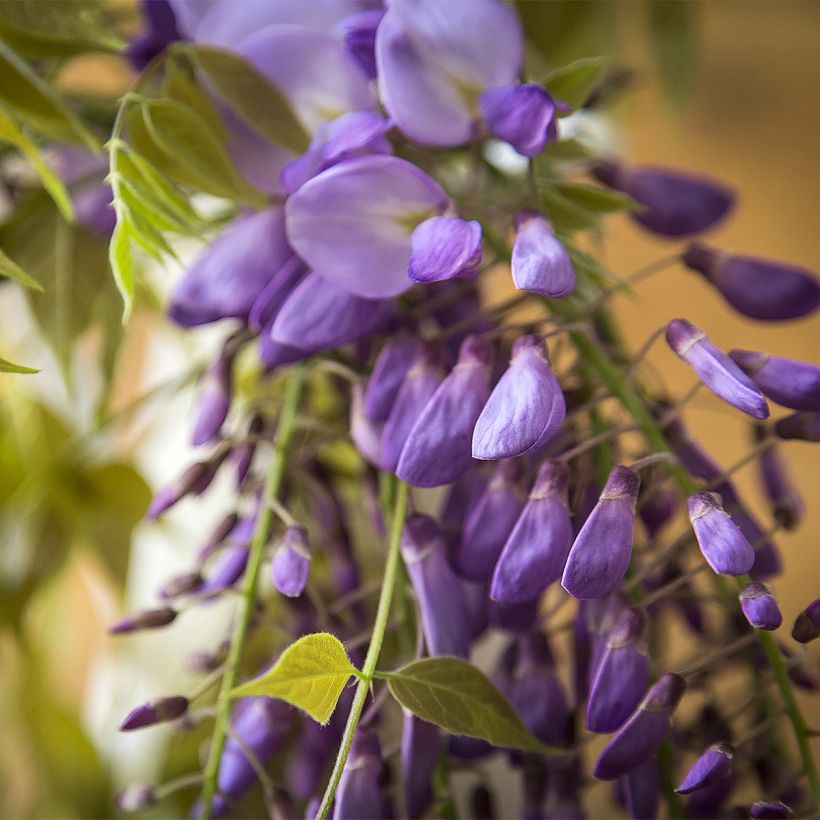





Plant habit
Flowering
Foliage
Botanical data
Wisteria
brachybotrys
Yokohama Fuji
Fabaceae
Silky wisteria 'Yokohama Fuji'
Cultivar or hybrid
Other Wisterias
View all →Planting and care
Wisteria 'Yokohama Fuji' should be planted in autumn (October) or spring (March) in fertile, deep, and well-drained soil in a sunny or semi-shaded location. Add compost. Water well after planting. In February, when the flower buds are formed, prune back (2 eyes) the branches that are devoid of them, in order to aerate the plant. Do not keep more than 4 flower buds (rounded) on the same stem. No training pruning is required to train it to climb a tree.
Planting period
Intended location
Care
Planting & care advice
-
, onOrder confirmed
Reply from on Promesse de fleurs
Similar products
Haven't found what you were looking for?
Hardiness is the lowest winter temperature a plant can endure without suffering serious damage or even dying. However, hardiness is affected by location (a sheltered area, such as a patio), protection (winter cover) and soil type (hardiness is improved by well-drained soil).

Photo Sharing Terms & Conditions
In order to encourage gardeners to interact and share their experiences, Promesse de fleurs offers various media enabling content to be uploaded onto its Site - in particular via the ‘Photo sharing’ module.
The User agrees to refrain from:
- Posting any content that is illegal, prejudicial, insulting, racist, inciteful to hatred, revisionist, contrary to public decency, that infringes on privacy or on the privacy rights of third parties, in particular the publicity rights of persons and goods, intellectual property rights, or the right to privacy.
- Submitting content on behalf of a third party;
- Impersonate the identity of a third party and/or publish any personal information about a third party;
In general, the User undertakes to refrain from any unethical behaviour.
All Content (in particular text, comments, files, images, photos, videos, creative works, etc.), which may be subject to property or intellectual property rights, image or other private rights, shall remain the property of the User, subject to the limited rights granted by the terms of the licence granted by Promesse de fleurs as stated below. Users are at liberty to publish or not to publish such Content on the Site, notably via the ‘Photo Sharing’ facility, and accept that this Content shall be made public and freely accessible, notably on the Internet.
Users further acknowledge, undertake to have ,and guarantee that they hold all necessary rights and permissions to publish such material on the Site, in particular with regard to the legislation in force pertaining to any privacy, property, intellectual property, image, or contractual rights, or rights of any other nature. By publishing such Content on the Site, Users acknowledge accepting full liability as publishers of the Content within the meaning of the law, and grant Promesse de fleurs, free of charge, an inclusive, worldwide licence for the said Content for the entire duration of its publication, including all reproduction, representation, up/downloading, displaying, performing, transmission, and storage rights.
Users also grant permission for their name to be linked to the Content and accept that this link may not always be made available.
By engaging in posting material, Users consent to their Content becoming automatically accessible on the Internet, in particular on other sites and/or blogs and/or web pages of the Promesse de fleurs site, including in particular social pages and the Promesse de fleurs catalogue.
Users may secure the removal of entrusted content free of charge by issuing a simple request via our contact form.
The flowering period indicated on our website applies to countries and regions located in USDA zone 8 (France, the United Kingdom, Ireland, the Netherlands, etc.)
It will vary according to where you live:
- In zones 9 to 10 (Italy, Spain, Greece, etc.), flowering will occur about 2 to 4 weeks earlier.
- In zones 6 to 7 (Germany, Poland, Slovenia, and lower mountainous regions), flowering will be delayed by 2 to 3 weeks.
- In zone 5 (Central Europe, Scandinavia), blooming will be delayed by 3 to 5 weeks.
In temperate climates, pruning of spring-flowering shrubs (forsythia, spireas, etc.) should be done just after flowering.
Pruning of summer-flowering shrubs (Indian Lilac, Perovskia, etc.) can be done in winter or spring.
In cold regions as well as with frost-sensitive plants, avoid pruning too early when severe frosts may still occur.
The planting period indicated on our website applies to countries and regions located in USDA zone 8 (France, United Kingdom, Ireland, Netherlands).
It will vary according to where you live:
- In Mediterranean zones (Marseille, Madrid, Milan, etc.), autumn and winter are the best planting periods.
- In continental zones (Strasbourg, Munich, Vienna, etc.), delay planting by 2 to 3 weeks in spring and bring it forward by 2 to 4 weeks in autumn.
- In mountainous regions (the Alps, Pyrenees, Carpathians, etc.), it is best to plant in late spring (May-June) or late summer (August-September).
The harvesting period indicated on our website applies to countries and regions in USDA zone 8 (France, England, Ireland, the Netherlands).
In colder areas (Scandinavia, Poland, Austria...) fruit and vegetable harvests are likely to be delayed by 3-4 weeks.
In warmer areas (Italy, Spain, Greece, etc.), harvesting will probably take place earlier, depending on weather conditions.
The sowing periods indicated on our website apply to countries and regions within USDA Zone 8 (France, UK, Ireland, Netherlands).
In colder areas (Scandinavia, Poland, Austria...), delay any outdoor sowing by 3-4 weeks, or sow under glass.
In warmer climes (Italy, Spain, Greece, etc.), bring outdoor sowing forward by a few weeks.






























